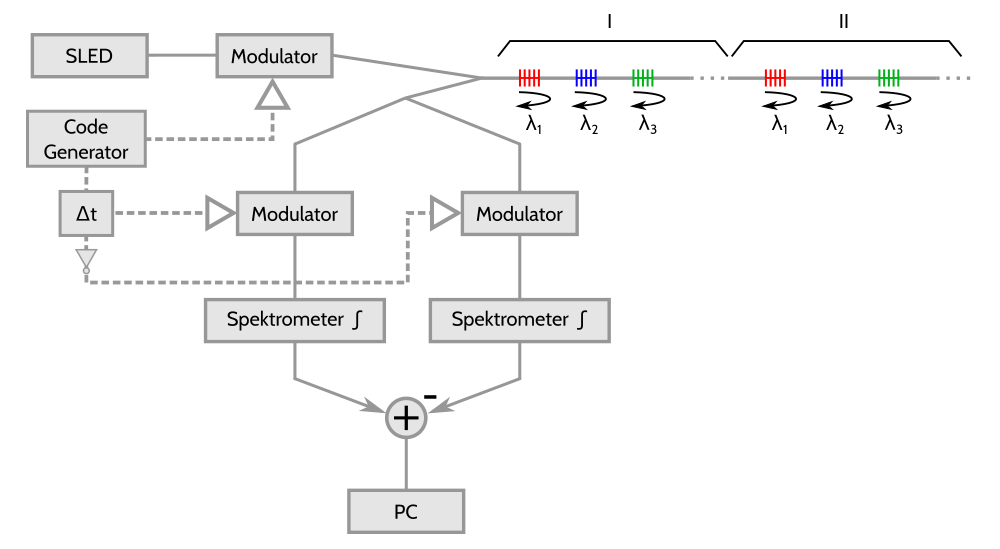Massive serial FBG sensor networks with CDM interrogation (MFBG-CDM)
FHprofUnt 2018
Fiber Bragg-gratings (FBG)
Code-division multiplex (CDM)
The ever increasing demand on network communication does not stop in daily life. Keywords like Industry 4.0 or Internet of Things (IoT) become more and more imporant in the economy, as well as in privacy. Besides the increasing amount of transmitted data, also more sensors are required to deliver information about different systems. Nowadays the implementation of optical fibres is indespensable. They provide advantages such as low EMI, fire-resistance, low weight and size, and last but not least the protection against eavesdropping. Besides communication networks, optical fibres can be used in sensing systems. Fibre optic sensing systems can be distinguished in different sensing methods. Distributed sensing offers the possibility to measure strain or temperature over a wide range of the fibre. But the spatial resolution is limited as well as only relative measurements are possible. Applying optical frequency domain reflectometry (OFDR), a high spatial resolution at close range (< 50m) is achieved. On the opposite, point sensing scores with high spatial resolution and absolute measurement over a possibly wide range of distributed point sensors within a fibre. Predominantly FBGs are used for point sensing applications. It is the aim to increase the number of FBGs in an optical fibre; so called quasi-distributed sensing. Current multiplexing techniques are wavelength-division multiplex (WDM) or optical time domain reflectometry (OTDR). Both techniques have a hugh limitation in terms of amount of sensors, dynamic range or measuring time. The proposed project combines the well established WDM technology with code-division multiplex (CDM) which allows spectrally overlapping FBGs. Hence, the amount of WDM sections can be multiplied with the amount of overlapping spectra. The amount of sensors is supposed to reach more than 1500 freely distributable sensing points within one fibre. Moreover, the combination of CDM and WDM allows an interrogation of several sensors within a WDM section. Thus, the measuring time decreases significantly compared to OTDR.
The CDM technique is depicted in the draft. A modulator modulates continous wave (CW) light emitted by an SLED light source. This light is reflected by the sensor network. Within one section different wavelengths are reflected (WDM), but each section can be identical throughout the whole network. Therefore, equal wavelengths reach the other two modulators. Light reflected by the rear-most sections has to travel a longer optical path length. Therefore it reaches the modulators later than front-most sections. Choosing appropriate codes (as orthogonal as possible), it is possible by applying a correlation process, to filter out light of a distinct section, with a distinct time delay (CDM). This project implements a known multiplexing technique of data transmission systems in optical sensing networks.

